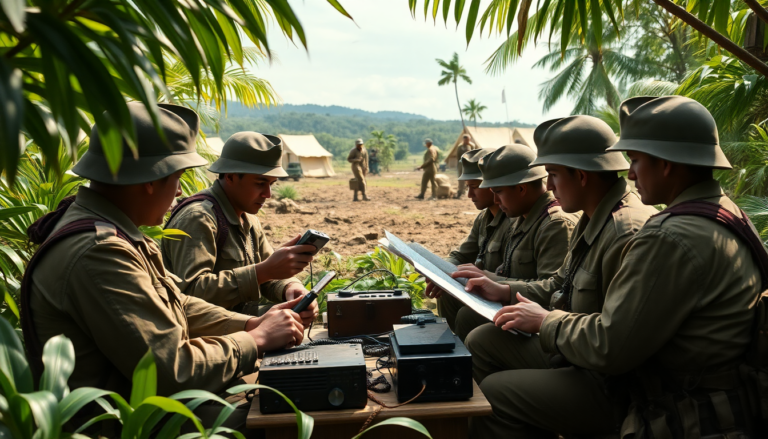Argomenti trattati
What is a Code Talker?
A code talker is a term used to describe American Indians who utilized their tribal languages to convey secret messages during military operations. The most renowned among them are the Navajo code talkers, who played an instrumental role in transmitting classified Allied communications in the Pacific during World War II. Interestingly, over 14 other Native American nations, including the Cherokee and Comanche, also contributed to the code talker efforts in both the Pacific and European theaters of the war. The concept of employing Native individuals fluent in both their tribal languages and English for secure communication first emerged in World War I, where the Choctaw Telephone Squad laid the groundwork for this innovative approach. However, it was not until World War II that the U.S. military formally recruited and trained American Indian speakers to serve as code talkers.
The Recruitment and Training of Code Talkers
In 1940, the U.S. Army began the recruitment of code talkers, primarily from Oklahoma. Other military branches, such as the Marines and Navy, soon followed suit. The first class of 29 Navajo recruits completed their training in 1942, which included developing and memorizing a unique military code using their largely unwritten language. This task required intense focus, often confining the code talkers in a secure room until they mastered their new responsibilities. The initial coding system, known as Type 1 code, consisted of 26 Navajo terms corresponding to individual English letters, making it possible to spell out words. For instance, the Navajo term for ‘ant,’ wo-la-chee, represented the letter ‘A.’
Types of Codes and Their Significance
Code talkers also created Type 2 codes, which involved direct translations from English to Navajo. They developed a specialized dictionary of military terms, initially containing 211 entries, later expanded to 411, to include words that had no equivalent in the Navajo language. For example, the term for ‘submarine’ was represented by besh-lo, meaning ‘iron fish.’ This creative and strategic use of language not only showcased the complexity of Native American cultures but also proved vital for secure military communication.
The Role of Code Talkers in Combat
Typically, code talkers worked in pairs within military units. During combat, one individual would manage the portable radio while the other would relay and translate messages from their Native language into English. This high-stakes environment was fraught with danger, particularly in the Pacific theater, where Japanese forces often targeted officers, medics, and radiomen. Code talkers had to remain mobile while transmitting messages to ensure their safety. Their contributions were critical to the Allied victory during World War II, as they participated in several key battles, including the D-Day invasion at Utah Beach and the pivotal fight at Iwo Jima. Major Howard Connor, a signal officer in the 5th Marine Division, famously stated, ‘Were it not for the Navajos, the Marines would never have taken Iwo Jima.’
The Legacy of Code Talkers
Despite their significant contributions, American Indian code talkers were instructed to keep their work confidential for decades. They were prohibited from sharing details of their communications even with family members. The unbroken codes they developed led to the military maintaining the program’s secrecy, preparing for potential future conflicts. It wasn’t until 1968 that the WWII code talker program was declassified, yet recognition for their bravery and service came slowly. While some acknowledgment occurred in the 1970s and 1980s, it took until 2001 for Congressional Gold Medals to be awarded to the Navajo and other code talkers, finally honoring their invaluable role in American history.
Conclusion
As we reflect on the remarkable contributions of American Indian code talkers during World War II, it becomes evident that their bravery and ingenuity were pivotal in securing victories for the Allied forces. Their legacy continues to inspire new generations, reminding us of the importance of cultural heritage and the sacrifices made by those who served. The story of the code talkers is not just one of wartime heroics but also a testament to the resilience and strength of Native American communities.

